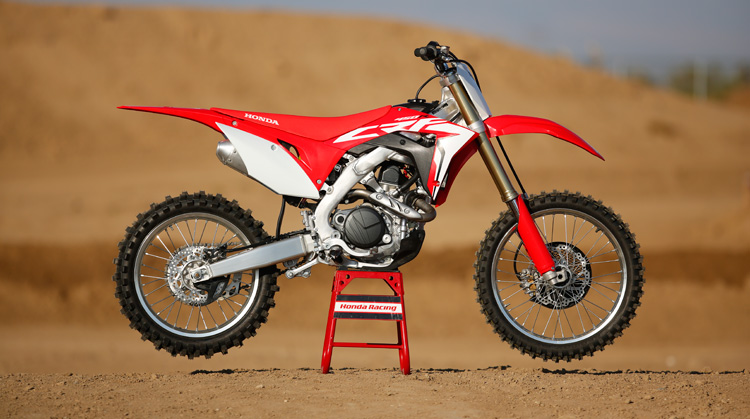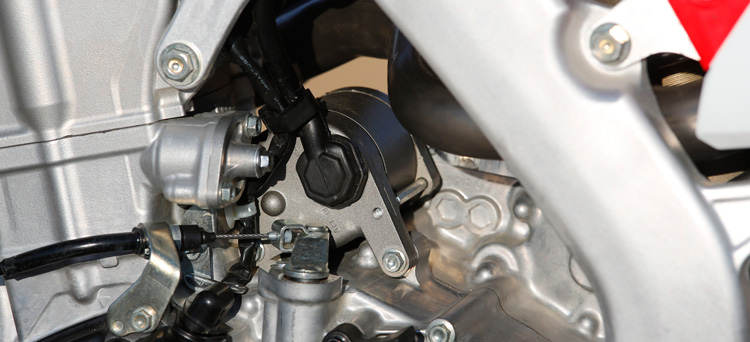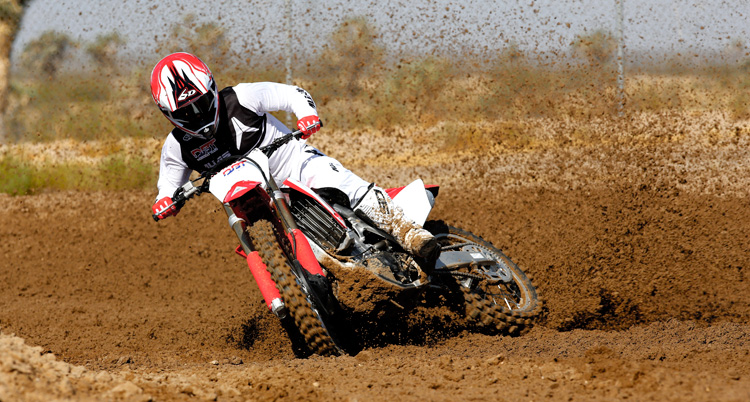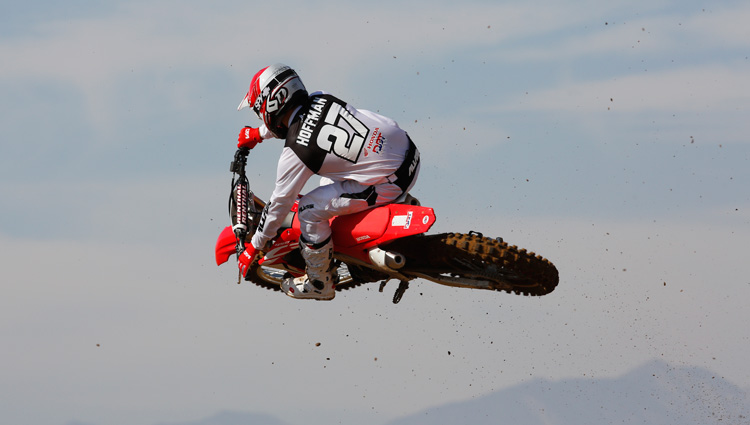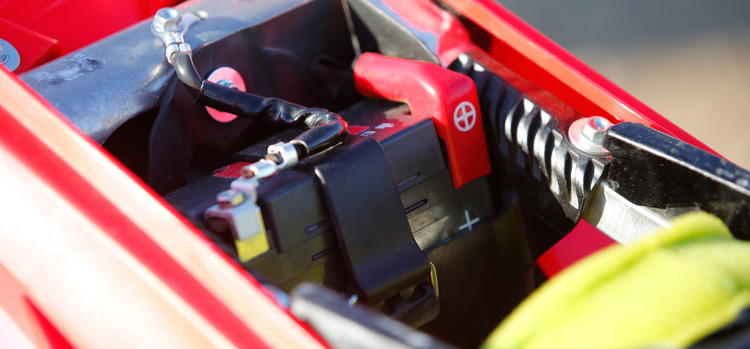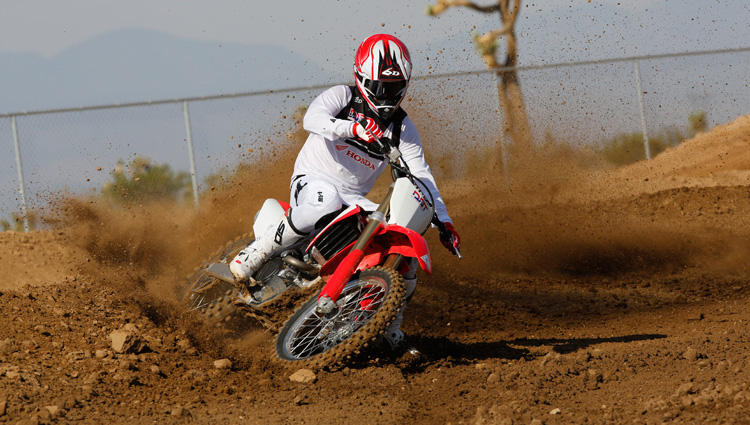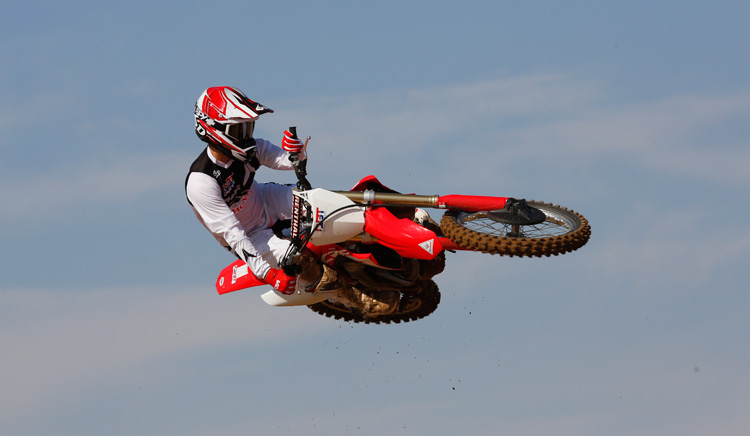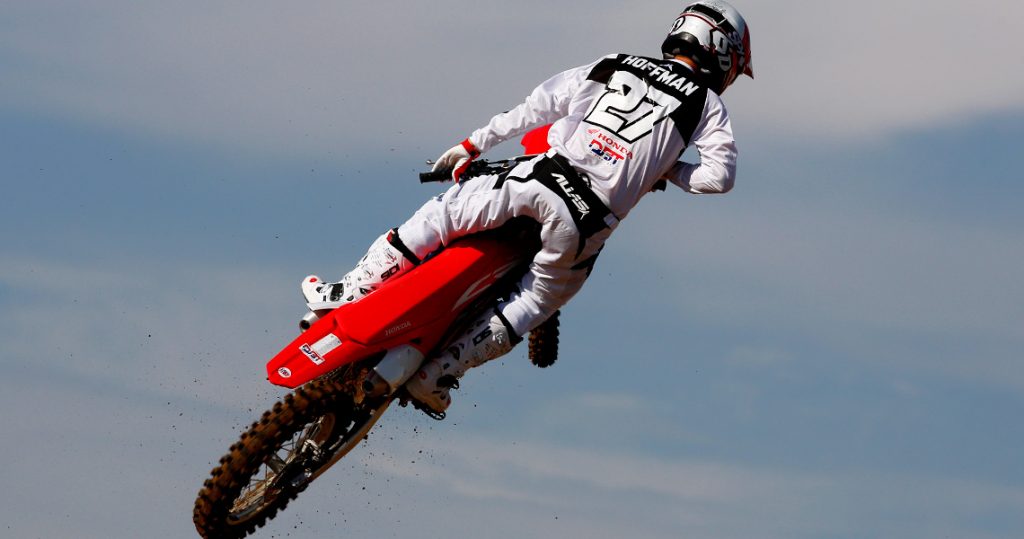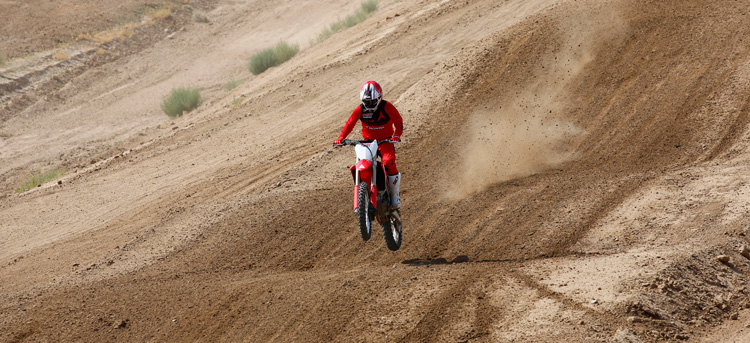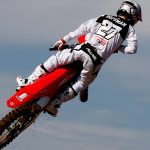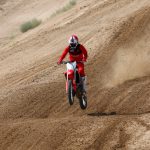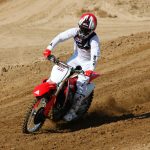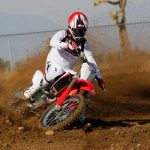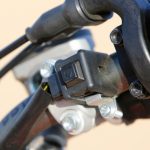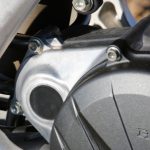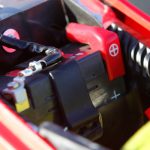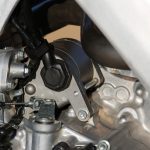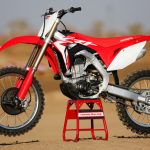First Impression 2018 Honda CRF450R
By Dustin Hoffman and Scott Hoffman (no relation, just ironic)
Photos by Scott Hoffman
2018 is here in the motorcycle world and Honda drew first blood as one of the first manufacturers to let us media bums ride shiny, new motorcycles.
Honda cocked the trigger by creating a brand-new 2017 CRF450R. It was all-new and they tried to correct the issues some had with the older version and bring back the prowess of the very popular 2008 CRF450R. The 2017 had some minor issues but were all able to be addressed for the most part. This was the focus for 2018. Here is a link to our 2017 test if you want to freshen up!
With 100-plus-degree temps hitting the So Cal track, there was no getting around that issue, Sunrise MX Park was the place to get some new bikes dirty.
The 2017 was a great improvement for Honda, it gave them a competitive stock bike that which in years past they hadn’t had. The 2017 model had its criticisms, however Honda took notice and addressed those areas. Delivering the 2018 to come standard with electric start (yes please), updated suspension settings, new FI mapping, and updated engine hangers (not the same as the RX model, yet very similar to what the HRC Factory team runs).
The first thing you will notice when swinging a leg over the 2018 CRF450R is the electric start. Last year the E start was an option for an upcharge of $650 (battery not included) plus you had to go through the headache to install the sucker. The standard electric start is nice, really nice. They spared no expense on the battery. They opted to equip the 2018 with a lithium iron battery (not Lithium-ion, Google it if you think it’s a typo), the same battery HRC uses on the Factory bikes, which is said to be more reliable, lasts longer, and is safer. Another cool feature about Honda’s electric start is the clutch perch assembly hides the electronics very nicely, merely unnoticeable as compared to last year’s boxy, bulky mess that was standard on the off-road RX model. As many of you who have owned or own an electric start bike, chances are you have accidently hit the start button with the bike in gear or while loading it up in your truck or van only to make yourself look like a kook. With the 2018 Honda, that can’t happen due to a couple safety features. One is that the clutch must be pulled in in order to start the machine. The second is that if you blip the throttle, or the throttle is open at all while trying to start the engine, the TPS sensor reads that and does not allow the bike to fire. This prevents the bike from backfiring or causing any subsequent issues. (This is likely why a few 2017 owners had case cracking issues—they turned the throttle while starting the bike and it kicked back). Honda is very particular about their safety standards, for example the Lithium iron battery and safety starting features.
Second most noticeable change is the updated suspension. For 2018, Honda upped the spring rate and valving to match, aiming at appeasing their average consumer with a target rider weight range of 170-200 lbs. I personally am on the lighter end of that scale at 165, so for me I had to soften things up a bit. Not to mention a bad wrist leaves me constantly searching for a softer, plush set up. Being on the lighter side, the bike was riding high in the stroke in the rear end and a bit stiff in the front end. The Honda guys were able to dial me in and get me more comfortable. For the fork, we ended up going two clicks out softer on compression, and 1 click slower in on the rebound. For the shock, I ended up running a bit more sag than others at 106.5mm. We also went out ½ turn on high-speed compression, allowing the bike to sit lower, and in one turn on low speed to keep the shock’s integrity in the lower part of the stroke. With those changes the bike felt balanced and comfortable, and settled into the corners nicely. At one point I jumped on one of the 2017s they had for us to ride. After riding that and jumping back on the 2018 I really noticed the benefits of the updated suspension settings. The 2018 sits higher in the stroke, giving the bike a more nimble and responsive feel in the corners, while having more bottoming resistance for the bigger jumps they had out here at Sunrise MX Park.
Then our heavier vet rider had a few issues but it was because he is over the 200-lb mark and the springs were a tad too soft for a proper shock setup. To avoid not having enough static sag, over 30mm, the race sag had to be set at 212mm, which is a little low in the rear. The settings were not ideal but still manageable. The heavier rider had to stiffen the rear a little more than the front by two clicks out back and one in the front. But be aware, the Honda fork is very sensitive, it works very well when set up correctly but we chased a few settings and discovered that a few clicks in the wrong direction can cause the bike to feel out of sorts and the feeling is very apparent but easily corrected.
The updated FI settings were also a big improvement over the 2017. The 2018 still comes with three maps. But with an updated map 1, the bike is much more connected to the throttle. The 2017 felt sluggish on bottom and then came alive all at once with a big hit. The 2018 updated mapping addresses that, the bike is now much more responsive, peppy, and the transition off the bottom is more tractable and seamless going into the meat of the power. This pep isn’t unmanageable or too throaty by any means. It’s just there, when you ask for it. Maps 2 and 3 remained the same. Map 2 being referred to as traction, the power is softened slightly initially, good for mud, slime, very hard-packed tracks, or vets that yearn for ultra-smooth. And map 3 being the aggressive map, aggressive indeed, almost too much for most of us unless you are in deep sand or loam.
The last change that Honda mentioned was the engine hangers. Though they did not go into detail about what exactly they changed, we were told that it was to increase flex and improve handling. At first I could not feel much difference, which is most likely due to the firmer suspension settings and a smooth, groomed track. It wasn’t until the end of the day when the track began to develop a few acceleration and braking bumps (and I had the suspension dialed in, and had run a few laps on the 2017) that I noticed a difference. The track was still pretty smooth so it’s hard to go into much detail, but I felt the 2018 allowed me to push the bike into rough spots with less deflection and stayed in line better than last year’s model. But for more on that I would stay tuned. We will have more in-depth testing at multiple tracks with multiple riders in the near future.
We also asked Honda about torque settings on the motor mounts and they said the settings are the same as 2017 and were set to OEM specs after the test bikes were broken in. On the off-road 2017 RX, we had a lot of success altering the torque settings but the moto bike was not as affected by the changes. We know the Factory race team also remove the rear tank mounting bolts to allow the frame to flex slightly, and some have even said they have tested and felt a difference by running only the rear exhaust hanger and removing the lower rear mounting bolt. Again, Honda does not advocate or endorse these changes but we know many have tested the differences, some say they can feel a difference, some said they could not tell at all. And because the 2018 specs were already finalized before the 2017 race season, even if changing or removing the mounts did make a difference, a change would not see production until 2019 or beyond. Even right now, most of the 2019 bike specs and settings have already been finalized or are very close to being finalized. Even slight changes require countless hours of re-testing and durability testing for a giant company such as Honda.
Although the 2018 CRF450R did not receive a host of big changes, they did address some of the minor issues and the 2018 settings cater to the core demographic buyer of a 450 motocrosser over the 2017. The stock engine mapping is improved, the suspension rides higher in the stroke and gives the bike more stability, and it’s less prone to swaps and settles into corners better. The CRF450R is still a very aggressive motocross bike and likes to be ridden hard and fast. I would say it is not a lazy man’s machine but not overly tiring to ride either. Suspension settings are important and if they are off too far could give the bike odd traits and a bad rap. But when they are in the zone, the 2018 CRF450R is a great motorcycle and better than the 2017 right from the dealer. The suggested retail price has also jumped up to $9,149, mostly due to the standard electric starting device.
Though the 2018 did not receive huge extensive changes, you feel the changes immediately and who does not adore the magic button. Overall the 18 CRF is improved over last year, refined and a competitive out-of-the-box machine. Honda did a good job at addressing what needed addressing. Stay tuned for more in-depth testing soon!
Help support our site by shopping here
